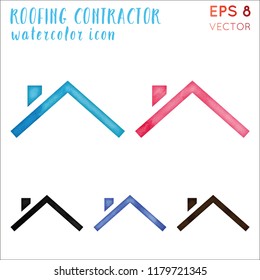Comparing Inside Vs. Exterior Paint: Trick Differences And Makes Use Of
Comparing Inside Vs. Exterior Paint: Trick Differences And Makes Use Of
Blog Article
Uploaded By-Ellis Henry
When you're picking in between exterior and interior paint, it's essential to understand their fundamental distinctions that affect both efficiency and aesthetics. Inside paints are crafted for lower VOC degrees and smoother coatings, making them optimal for indoor areas, while outside paints are created to withstand rough weather and UV direct exposure. Each type offers a distinctive objective, but understanding when to make use of one over the other can considerably affect your job's end result. So, what elements should you think about when making your choice?
Structure and Formula
When choosing between exterior and interior paint, understanding their make-up and solution is important. Interior paints usually consist of a reduced amount of unpredictable organic substances (VOCs), making them much safer for interior air quality. You'll discover they usually have a smoother finish, which boosts their capacity to withstand stains and allows for less complicated cleansing. They're made to stand up to the rigors of interior environments, including varying moisture degrees and temperature fluctuations.
On the other hand, outside paints are developed to withstand harsher problems. They usually consist of greater levels of pigments and ingredients to withstand fading from UV rays, as well as to avoid mildew and mold development. Their structure consists of more binders and materials, which supply better bond to surfaces exposed to the components. This makes sure the paint can withstand rain, snow, and fluctuating temperature levels without peeling off or fracturing.
Efficiency and Longevity
Reviewing efficiency and sturdiness is necessary when selecting between interior and exterior paint. Inside paint is developed for surface areas that experience much less deterioration. It commonly resists fading and scuffing, making it perfect for living spaces and bed rooms. Nevertheless, it might not stand up well in high-moisture areas like bathroom and kitchens without proper formulation.
On the other hand, outside paint faces harsher conditions. visit the following website page to endure UV rays, rain, and temperature variations. https://www.marthastewart.com/8350975/paint-color-trends-2023 of paint usually includes ingredients that avoid mold and mildew and mildew development, ensuring long life in various environments. When you utilize external paint, you can expect it to last numerous years longer than indoor paint, offered it's used properly.
One more key distinction lies in the finish alternatives. Interior paints frequently have a variety of finishes for visual allure, while outside paints prioritize resilience over shine. If you're looking for something that can take care of the elements, outside paint is your best bet.
In contrast, if you're concentrated on interior aesthetic appeals with much less issue for severe problems, interior paint might be ideal. Eventually, your option should line up with the details demands of the setting.
Visual Considerations
A fresh layer of paint can change a room, yet aesthetic considerations play a vital role in your option in between interior and exterior alternatives. When you're choosing paint, think about the mood you want to create. Inside paint enables you to check out a bigger series of shades and coatings, enabling you to express your personal design and boost your home's setting. Whether you go with soft pastels or bold shades, the right interior paint can make your areas feel comfy, vibrant, or serene.
On the other hand, exterior paint needs to straighten with your home's architecture and the surrounding setting. Below, you're not simply making a style declaration; you're additionally taking into consideration visual charm. Choosing colors that integrate with your community can improve your home's worth and visual allure. Remember that outside paint is additionally subject to fading and climate modifications, so selecting a classic color can save you from constant repainting.
Ultimately, take into consideration how each option fits your vision. By aligning your paint selection with your wanted aesthetic, you can develop rooms that reflect your individuality while maintaining functionality.
Conclusion
When it involves choosing paint, recognizing the crucial distinctions in between interior and exterior options is important. Inside paints focus on aesthetics and reduced VOCs, making them best for boosting your indoor areas. In contrast, exterior paints are designed for toughness and weather condition resistance, safeguarding your home from the elements. By considering your particular demands and the environment, you can confidently choose the best paint to attain the look and longevity you want for your room.
